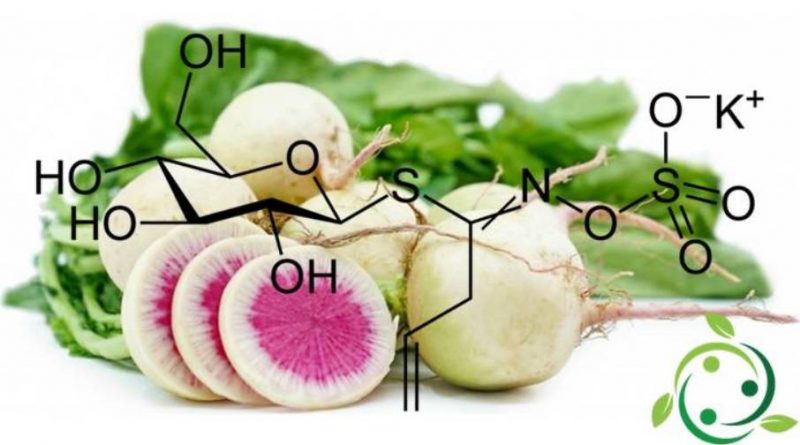Sinigrin
Sinigrin
Sinigrin, whose term in the official IUPAC nomenclature is: potassium 1- (β-D-glucopiranosiltio) but-3-enylidene amino oxysulfonate and whose brute or molecular formula is: C10H16NO9S2K.H2O, chemically is a glucosinolate and more precisely mironate of potassium. This compound, in the pure state is presented in water-soluble crystals, with a strong pungent odor and caustic taste.
Sinigrin is present in various plants of the Brassicaceae family; these include brussels sprouts, broccoli (Brassica oleracea), black mustard (Brassica nigra, wild radish (Raphanus sativus) and horseradish (Cochleraria armoracia).
Sinigrin, in the presence of water, is hydrolysed by the enzyme myrosinase, also present in mustard seeds, with the release of glucose, potassium acid sulphate and an ethereal oil consisting of more than 90% allyl isothiocyanate.
This process occurs in plants that contain sinigrin, in which, when plant tissues are crushed or damaged, the enzyme myrosinase breaks down sinigrin forming glucose, potassium acid sulfate and allyl isothiocyanate (mustard oil), which is responsible for spicy taste of mustard and horseradish.
Warning: The information given is not medical advice and may not be accurate. The contents are for illustrative purposes only and do not replace medical advice.

